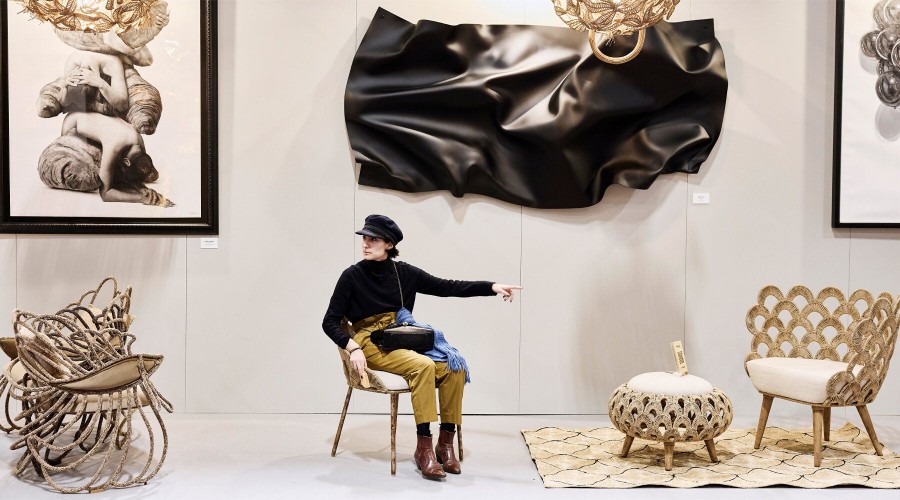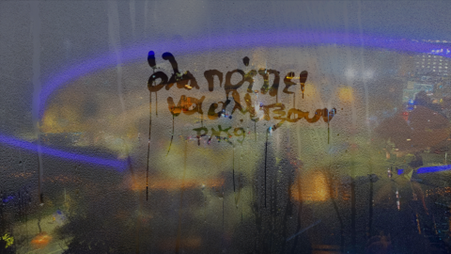Δημόσιος χώρος: Ασφαλέστερη πόλη με στόχο τη συμπερίληψη
DS.WRITER:
Christina Ioakeimidou
Πηγή Εικόνας: cloudfront-us-east-2.images.arcpublishing.com
Εδώ και αρκετές δεκαετίες έχει αναγνωριστεί η όλο και επιτακτικότερη ανάγκη ανάπτυξης ασφαλών χώρων στις πόλεις, για τις κοινωνικές ομάδες που πέφτουν θύματα παρενόχλησης στον δρόμο. Γυναίκες, παιδιά και κυρίως τα μέλη της LGBTQ+ κοινότητας είναι πιθανό να υποστούν κάποιου είδους βίαιη συμπεριφορά, γεγονός που επέτεινε την ανάγκη αναδιαμόρφωσης των υπαρχόντων δημόσιων χώρων ή δημιουργίας περιοχών όπως είναι οι Gayborhoods. Μάλιστα, οι τελευταίες γειτονιές έχουν υπάρξει σύμβολα των πόλεων στις οποίες ανήκουν. Το Soho στο Λονδίνο, το Greenwich Village της Νέας Υόρκης, το Schöneberg στο Βερολίνο αλλά και το αθηναϊκό Γκάζι είναι κάποιες από τις γειτονιές που έχουν επίσημα ενταχθεί στη λίστα τού The Gayborhood Foundation και αποτελούν περιοχές-σταθμούς για την κοινωνική και, κυρίως, νυχτερινή ζωή των προαναφερθεισών πόλεων. Αρκεί όμως αυτή η πρωτοβουλία της ίδιας της κοινότητας, για να αποτρέψει την εξάπλωση της βιαιότητας και να ενισχύσει την προστασία των μελών της; Μήπως θα έπρεπε οι εκάστοτε δημόσιοι φορείς να μεριμνήσουν για την αποδοχή των LGBTQ+ πολιτών μέσω άλλων πρωτοβουλιών;
Οι Gayborhoods ως μέρη ανάσας για την κοινότητα;
Οι Gayborhoods φαίνεται ότι δεν είναι απλώς γειτονιές. Είναι μέρη που δημιουργήθηκαν, ήδη από τη δεκαετία του 1950, για να δώσουν φωνή και ευκαιρίες σε ανθρώπους οι οποίοι διαχρονικά αποκλείονταν από τη ζωή των πόλεων στις οποίες ανήκαν. Τα οφέλη για τα queer άτομα φαίνεται να μην περιορίζονται μόνο στο κοινωνικό επίπεδο (ευκολότερη ανάπτυξη των διαπροσωπικών σχέσεων, έκφραση και κοινωνική αποδοχή), αλλά τους δίνουν επιπλέον τη δυνατότητα οικονομικής εξέλιξης, αφού παροτρύνουν την αναβάθμιση περιοχών που παλαιότερα αδίκως θεωρούνταν γκέτο, μέσω των επενδύσεων και της δυνατότητας τοπικής διοίκησής τους. Με άλλα λόγια, οι κάτοικοι δυνητικά μπορούν να ζήσουν άφοβα και να αναπτύξουν επαγγελματικές δραστηριότητες, ορίζοντας κατ΄ επέκταση και την οικονομική πορεία των συγκεκριμένων περιοχών.
Ωστόσο, παρά τα θετικά στοιχεία, όπως είναι η δυνατότητα ελεύθερης έκφρασης και η πρακτικότητα που προσέφεραν (καλές συγκοινωνιακές συνδέσεις με τα υπόλοιπα μέρη της πόλης, πρόσβαση σε μπαρ και χαμηλά ενοίκια), οι Gayborhoods φαίνεται να αλλάζουν δραστικά. Η όλο και αυξανόμενη επενδυτική δραστηριότητα πλουσιότερων γκέι λευκών ανδρών, οδήγησε στην αύξηση του κόστους ζωής και τη σταδιακή περιθωριοποίηση των μελών της κοινότητας που δεν ανήκαν στις ανώτερες κοινωνικές τάξεις. Επιπλέον, η μετατροπή των άλλοτε υποβαθμισμένων περιοχών σε in στέκια ομοφυλόφιλων και ετεροφυλόφιλων ατόμων, έφερε την αλλοίωση του χαρακτήρα γειτονιών όπως το λονδρέζικο Soho, στο οποίο παρατηρούνται ακόμα και ασυνήθιστα υψηλά επίπεδα ομοφοβίας.

Soho, Λονδίνο | Πηγή εικόνας: theideasmanifestor.com
Προφανώς, όσο και να διαφοροποιηθεί ο χαρακτήρας των εν λόγω περιοχών, αυτές δεν παύουν να είναι χώροι όπου η πλήρης αποδοχή των μελών τής LGBTQ+ κοινότητας είναι ο βασικός άξονας, γύρω από τον οποίο αναπτύσσεται η κοινωνική ζωή των κατοίκων και των θαμώνων τους. Ωστόσο, είναι φανερό ότι οι Gayborhoods δεν πρέπει να αποτελούν το μοναδικό εγχείρημα προστασίας και διασφάλισης ενός καλύτερου βιοτικού επιπέδου της queer κοινότητας, αλλά να δρουν συμπληρωματικά με μία κεντρικά σχεδιασμένη ανάπτυξη.
Δημόσια ασφάλεια, προβολή, συμπερίληψη
Η επιτακτική ανάγκη της συμπερίληψης έχει αναγνωριστεί από αρκετά κράτη παγκοσμίως, καθώς οι LGBTQ+ σημαίες έχουν τοποθετηθεί σε εμφανή θέση έξω από πολλά δημόσια κτίρια. Μάλιστα, και σε συνεργασία με δημόσιους φορείς διαφόρων πόλεων, έχει αναπτυχθεί το Rainbow Cities Network, με σκοπό την ενίσχυση της τοποθέτησης σημαιών σε δημόσιους χώρους ανά την υφήλιο. Επιπλέον, σε πολλές queer περιοχές, η ανδρική φιγούρα στους φωτεινούς σηματοδότες έχει αντικατασταθεί από δύο φιγούρες-ζευγάρι του ίδιου φύλου.
Μία ακόμα κίνηση που προωθεί την ενότητα της κοινότητας, είναι η προσπάθεια του Lucas Larochelle, ενός Καναδού queer. Το project του, Queering the Map, είναι στην ουσία ένα διαδραστικό σάιτ το οποίο μετέτρεψε τον χάρτη της Google σε ένα «παγκόσμιο λεύκωμα», στο οποίο queer άτομα μπορούν να μοιράζονται τις εμπειρίες τους, αφήνοντας σχόλια σε πόλεις του πλανήτη που τους προσέφεραν μία προσωπική στιγμή (coming out stories και ιστορίες συνειδητοποίησης κτλ.). Φυσικά, αν και αυτές οι προσπάθειες δρουν αρκετά ενισχυτικά στη δημιουργία κοινωνιών πλήρους αποδοχής, παρόλα αυτά επείγουν οι περισσότερες πρακτικές αλλαγές στους δημόσιους χώρους.

Πηγή εικόνας: informationisbeautifulawards.com
Σύμφωνα με την έρευνα “Queering Public Space” του πανεπιστημίου του Westminster, υπάρχουν τρεις βασικές προϋποθέσεις στον σχεδιασμό χώρων, οι οποίοι θα είναι ικανοί να προσφέρουν ασφάλεια στα άτομα της queer κοινότητας. Το πρωταρχικό ζήτημα είναι αυτό της ιδιωτικότητας στους δημόσιους χώρους. Αυτή μπορεί να επιτευχθεί με τη δημιουργία πάρκων, όπου οι χώροι πρασίνου θα τοποθετούνται έτσι, ώστε να εξασφαλίζουν το συναίσθημα ιδιωτικότητας των ατόμων. Επιπλέον, η ύπαρξη ικανοποιητικού φωτισμού δρα θετικά, αφού ελαχιστοποιεί το αίσθημα φόβου και απομόνωσης. Τα παραπάνω, καθώς και η αποφυγή σχεδιασμού μεγάλων ανοιχτών πάρκων ή, στον αντίποδα, κλειστοφοβικών χώρων, ήταν τα κύρια σημεία των απαντήσεων των ερωτηθέντων της έρευνας.
Αυτή η προσεκτικότερη προσέγγιση του σχεδιασμού ακολουθήθηκε στη Βιέννη, όπου οι σχεδιαστές προτίμησαν την εγκατάσταση ζεστού φωτισμού στους δρόμους, με σκοπό τον περιορισμό των βίαιων περιστατικών. Επίσης, τα πάρκα της πόλης σχεδιάστηκαν με έναν αρκετά περίπλοκο τρόπο, μέσω της ανάπλασης περιοχών με ημι-ιδιωτική χρήση. Αυτή η εναλλαγή ορατού-μη ορατού φαίνεται πως προσέφερε στα άτομα αρκετό ιδιωτικό χώρο, μέσα σε ένα κατεξοχήν δημόσιο πάρκο.
Δευτερευόντως, οι πολεοδόμοι πρέπει να λαμβάνουν υπόψη την αναγκαιότητα σχεδιασμού κατοικιών για όλους τους τύπους οικογένειας. Η επικέντρωση σχεδιασμού με βάση τα ετεροφυλόφιλα άτομα είναι κυρίαρχη και αφορά όλες τις ηλικιακές ομάδες ατόμων στην καθημερινότητά τους. Ένα παράδειγμα που θα μπορούσε να αναφερθεί, αφορά τα μεγαλύτερα ηλικιακά μέλη της queer κοινότητας και τις δυσκολίες που αυτά αντιμετωπίζουν στον τομέα της περίθαλψης και της στέγασης. Μια λύση σε αυτό το βασικό μέλημα είναι η δημιουργία οίκων ευγηρίας που να προορίζονται αποκλειστικά για μέλη της κοινότητας, στοχεύοντας στην καλύτερη περίθαλψή τους, μακριά από τα αρνητικά και πολλές φορές ομοφοβικά σχόλια των συνομηλίκων τους. Φυσικά, το προσωπικό θα πρέπει να έχει την αντίστοιχη εκπαίδευση, ούτως ώστε να αποφευχθούν συμπεριφορές από τις οποίες οι τρόφιμοι πρέπει να προστατευτούν. Ωστόσο, οι δυσκολίες που αντιμετωπίζουν τα queer άτομα δεν περιορίζονται, δυστυχώς, μόνο στους οίκους ευγηρίας. Προφανώς η κατάσταση που περιγράφεται παραπάνω, αποτελεί απλώς ένα παράδειγμα της γενικότερης τάσης της μοντερνιστικής αρχιτεκτονικής, η οποία περιστρέφεται γύρω από μία binary αντίληψη του σχεδιασμού και του design, που είναι εμφανής παντού.
Στο ίδιο μήκος κύματος είναι και το πρότζεκτ Stalled! της transgender ιστορικού Susan Stryker, του αρχιτέκτονα Joel Sanders και του καθηγητή Terry Kogan. Το πρότζεκτ, που αφορά τη διαμόρφωση των δημόσιων washrooms, είναι στηριγμένο σαν φιλοσοφία στη δουλειά του Lucas Cassidy Crawford, “Transgender Architectonics: The Shape of Change in Modernist Space” (2015). Ουσιαστικά, οι οραματιστές του Stalled! υπόσχονται να δημιουργήσουν ένα είδος χώρου για όλους, απαλλαγμένου από τους περιττούς διαχωρισμούς, εξυπηρετώντας άτομα διαφορετικών φύλων, ΑμεΑ κτλ.
Η προβολή της διαχρονικότητας της κοινότητας
Εκτός από τον πολεοδομικό επανασχεδιασμό, το τρίτο μέρος της έρευνας και βασικότερο σημείο της όλης προσπάθειας συμπερίληψης επικεντρώνεται στην προβολή της ζωής των LGBTQ+ πολιτών διαχρονικά. Αυτό μπορεί να επιτευχθεί με την τοποθέτηση και δημιουργία μνημείων ή τόπων μνήμης, τα οποία θα λειτουργούν σαν σύμβολα της συνεχούς ενεργής ζωής των ατόμων. Στόχος αυτής της προσπάθειας είναι η ευαισθητοποίηση όλων των πολιτών και η ενίσχυση της ορατότητας της κοινότητας στην κοινωνία. Η σκέψη “we are everywhere“ ενισχύει τη φυσική και χωρική παρουσία, απομακρύνοντας τα queer άτομα από την πρότερη κοινωνική αφάνεια.
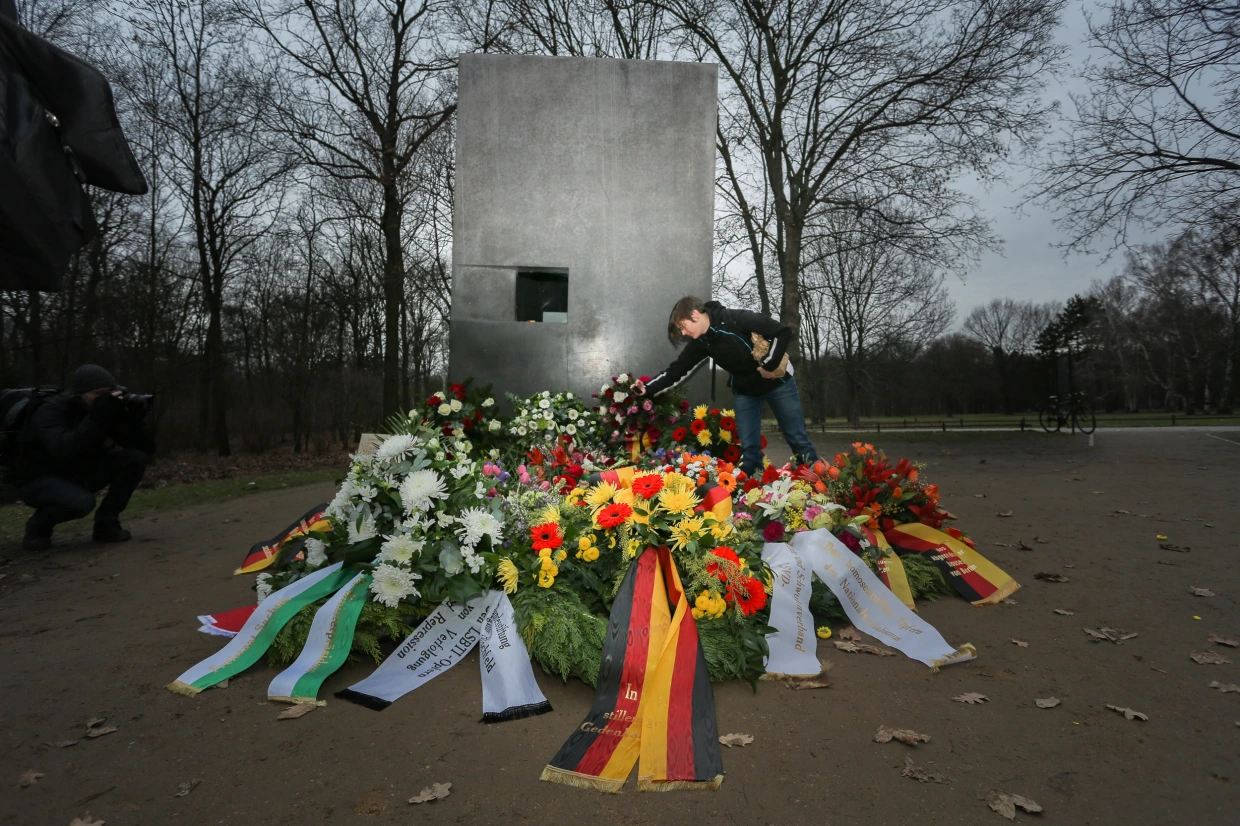
The Memorial to the Homosexuals Persecuted under Nazism, Βερολίνο | Πηγή εικόνας: nbcnews.com
Τέτοιες κινήσεις έχουν αρχίσει να αναπτύσσονται σε διάφορες ευρωπαϊκές χώρες. Το The Memorial to the Homosexuals Persecuted under Nazism στο Tiergarten του Βερολίνου, έργο των καλλιτεχνών Michael Elmgreen και Ingar Dragset, φιλοτεχνήθηκε το 2008. Η κυβοειδής κατασκευή είναι κατασκευασμένη από σκυρόδεμα, έχοντας στο μπροστινό μέρος ένα άνοιγμα, από το οποίο ο επισκέπτης, κοιτάζοντας στο εσωτερικό, μπορεί να δει δύο άνδρες να φιλιούνται. Αυτή η μυστική πράξη λειτουργεί ως συμβολισμός της κατάστασης στην οποία τα μέλη της LGBTQ+ ζούσαν, φοβούμενοι να εκφραστούν δημόσια. Παρόμοια μνημεία υπάρχουν στη Φρανκφούρτη (Frankfurter Engel, 1994) και την Κολωνία (Kölner Rosa Winkel, 1994), ως ενθύμηση των θηριωδιών που υπέστη η κοινότητα κατά τη Ναζιστική περίοδο.
Παρόμοια μνημεία υπάρχουν σε πολλές χώρες του κόσμου. Κάποια παραδείγματα είναι το Gay Liberation Monument (Νέα Υόρκη), το Alan Turing Memorial (Μάντσεστερ) ή το άκρως μινιμαλιστικό Monumento en memoria de los gais, lesbianas y personas transexuales represaliadas της Βαρκελώνης. Ανάλογες κινήσεις έχουν γίνει και στη Γαλλία, με την απόφαση ονοματοδοσίας δρόμων, πάρκων κτλ. προς τιμήν γνωστών LGBTQ προσωπικοτήτων, όπως της Marie Thérèse-Auffray, της Coccinelle ή του ζεύγους Jean Diot και Bruno Lenoir.
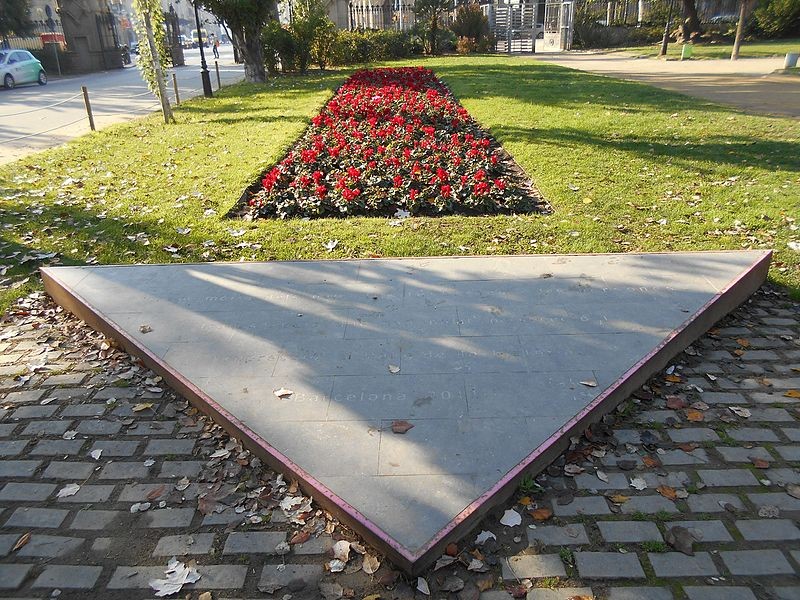
Monumento en memoria de los gais lesbianas y personas transexuales represaliadas, Βαρκελώνη | Πηγή εικόνας: es.m.wikipedia.org
Η διαδραστική αυτή προσέγγιση της αποδοχής μέσω της παρουσίας μνημείων, προφανώς μπορεί να αποτελέσει το έναυσμα μιας νέας αρχής για την ελεύθερη ζωή της queer κοινότητας. Ωστόσο, αν και οι οργανωμένες προσπάθειες πληθαίνουν, δεν φαίνεται να υπάρχει κάποια κεντρικά οργανωμένη στρατηγική μείωσης των ομοφοβικών εγκλημάτων, ή χρηματοδότησης της ανάπλασης περιοχών όπου εντοπίζονται τα περισσότερα περιστατικά ομοφοβικής βίας. Μήπως ήρθε η ώρα, λοιπόν, η κοινωνία να δει το πρόβλημα συνολικά και να χρησιμοποιήσει τις διάφορες κοινωνιολογικές και πολεοδομικές μελέτες έμπρακτα, κοιτάζοντας το μέλλον, απαλλαγμένη από την όποια προκατάληψη του παρελθόντος;
Further reading/ Sources
Olivier Vallerand, Queer Looks On Architecture: From Challenging Identity-Based Approaches To Spatial Thinking. Aπό: https://www.archdaily.com/963534/queer-looks-on-architecture-from-challenging-identity-based-approaches-to-spatial-thinking.
Ghaziani A. (2020). Why Gayborhoods Matter: The Street Empirics of Urban Sexualities. The Life and Afterlife of Gay Neighborhoods: Renaissance and Resurgence, 87–113. https://doi.org/10.1007/978-3-030-66073-4_4.
Evan Pavka, What Do We Mean By Queer Space?. Από: https://www.azuremagazine.com/article/what-do-we-mean-by-queer-space/.
Pippa Catterall & Ammar Azzouz, The queer city: how to design more inclusive public space. Από: https://theconversation.com/the-queer-city-how-to-design-more-inclusive-public-space-161088 .
How to be an LGBT-Inclusive Nursing Home. Από: https://www.storiicare.com/blog/lgbt-inclusive-nursing-home.
Katie Cashman & Waldo Soto. Cultivating Urban Queer Inclusivity in Berlin, Nairobi, and Santiago. Από: https://www.urbanet.info/queer-cities-berlin-nairobi-and-santiago/.
Katherine Guimapang. Perceptions of Safety: Weronika Zdziarska Questions Urban Design and Its Impact on Gender-Based Violence Experienced by Women in Cities. Από: https://archinect.com/features/article/150281725/perceptions-of-safety-weronika-zdziarska-questions-urban-design-and-its-impact-on-gender-based-violence-experienced-by-women-in-cities?fbclid=IwAR2aImahxvf8GlAlJYAHn5roybke7QHB5yZanWIfklxFll9trQW1Ppbry1U.
Περισσότερα για το Stalled! project: https://www.stalled.online/.
Πληροφορίες και λίστα με τις Gayborhoods: https://gayborhoodfoundation.com/.
Πληροφορίες για το Queering the Map: https://www.queeringthemap.com/ και συνέντευξη του Lucas Larochelle στο i-D: https://i-d.vice.com/en_uk/article/vbxkpb/queering-the-map-is-connecting-queer-moments-in-life.




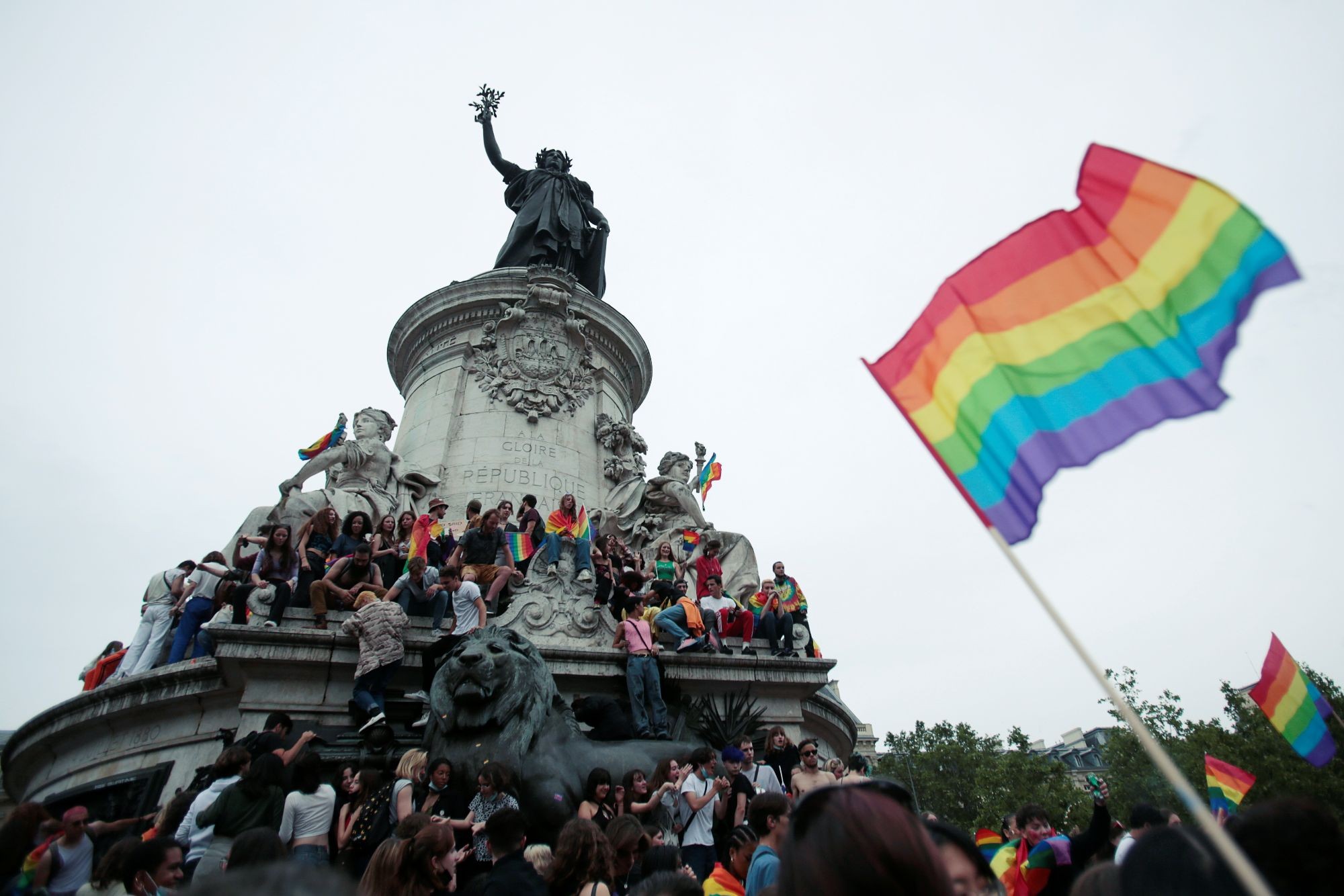
.jpg)
.jpg)
